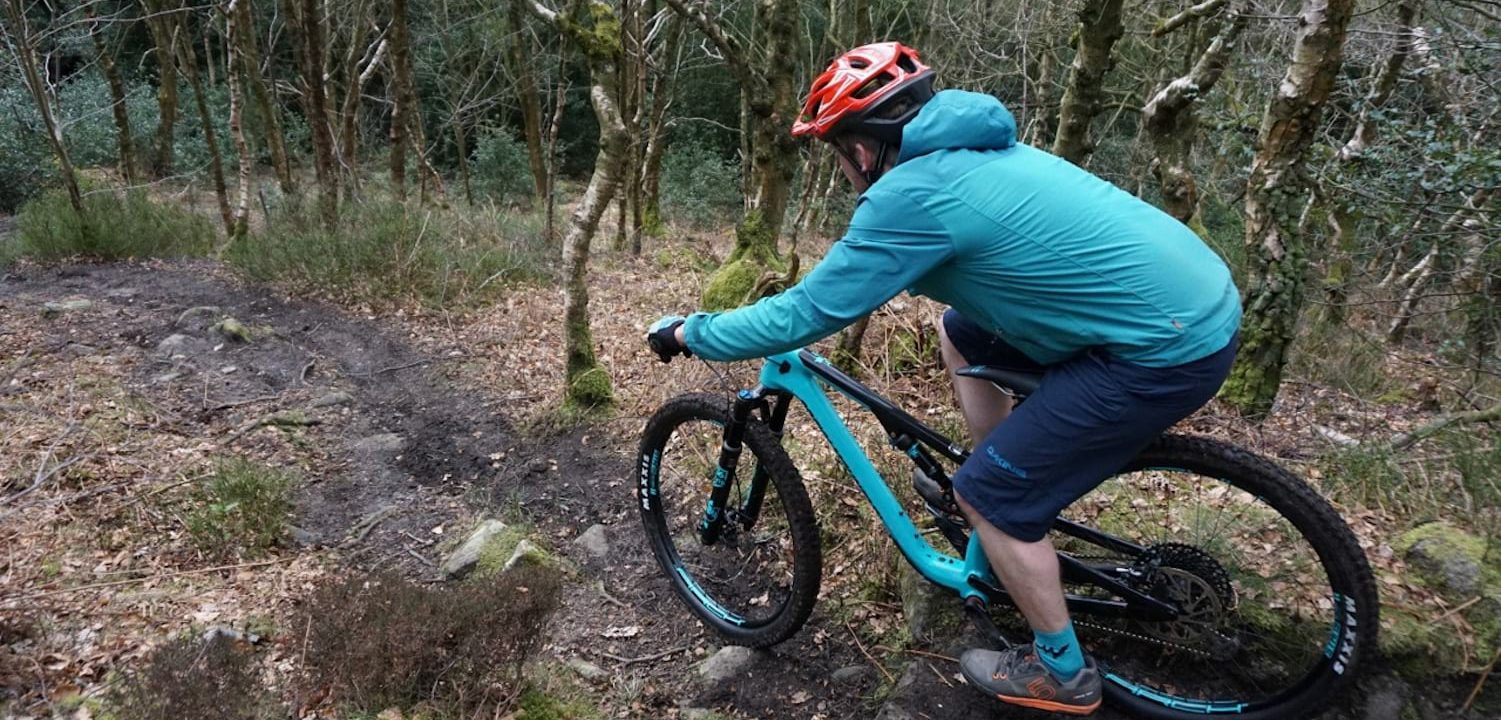Brand new for 2019 (except it’s a bit early, so maybe 2018.5?) the Thunderbolt is the latest bike to come from Rocky Mountain. The BC Edition shown here is currently the only test bike in the country, so to make the most of it, we put it into Antony’s hands two weeks ago to give the wee blue Thunderbolt some proper riding around the UK’s very own British Colombia: The Grim North™. Take it away Antony!
One by one, Rocky Mountain’s bikes are getting a fairly radical update. First there was the Element and Slayer, then there was the Altitude that we tested last year, the Pipeline plus bike, and the 29er Instinct. To say its been busy over in Canada would be quite the understatement
I spent some solid time aboard the BC Edition version of the Instinct – a pumped up version with 160/155mm of travel and a burlier parts spec – and while it felt right at home on lumpy, beaten-up trails, there’s no denying that you need to live and ride somewhere pretty special to justify a 160mm travel 29er.
This here is its little sibling; the BC Edition Thunderbolt, and at least in theory anyway, for most UK riders, the Thunderbolt will probably seem like a more rounded proposition.
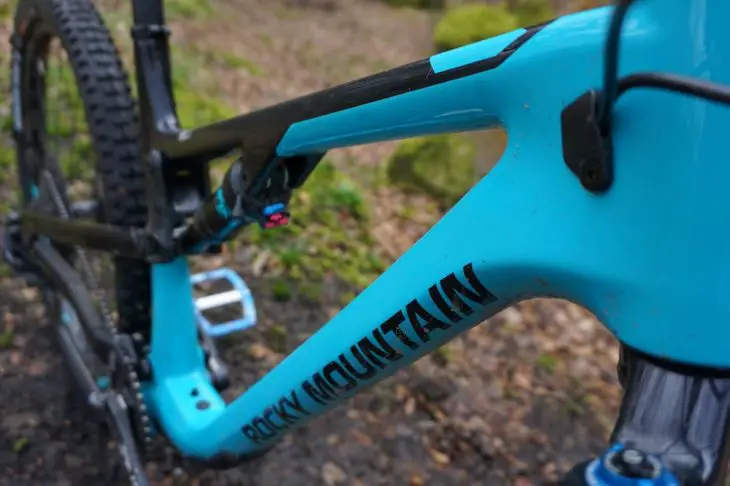
Rocky Mountain is moving towards a pleasing visual unity for its bikes, and the Thunderbolt looks just like a slight less rangy version of both the 140mm travel 29er Instinct and the 150mm travel 27.5in Altitude. In comparison, the regular Thunderbolt has 27.5in wheels with 130mm of travel at each end. But as usual, the ‘BC Edition’ ramps things up a bit, taking this Thunderbolt to 140mm travel at both ends. And not just that, the BC Edition gets a Fox 36 fork up front and a suitably thugged-out build kit. The Thunderbolt sits in the XC category of Rocky Mountain’s website, but don’t be deceived – this is built for the Canadian version of cross country.
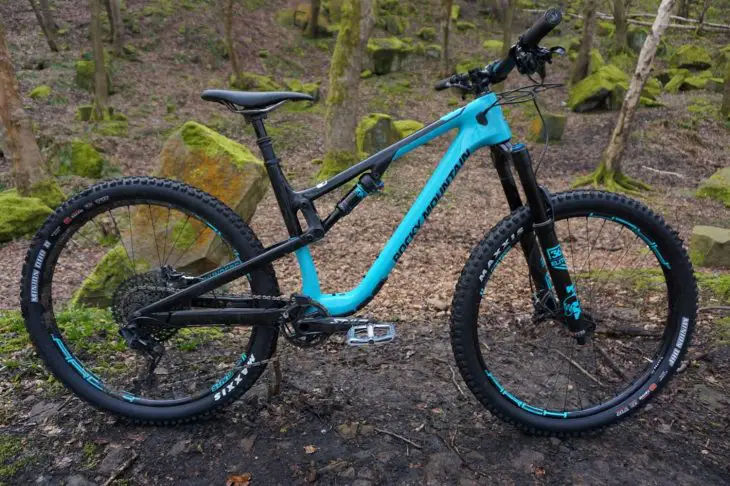
The Bike
So for an XC bike, we get a very trail-y set of numbers – a 66.4° head angle, a 74.4° seat angle, and a fairly generous 600mm effective top tube. Compared to the old Thunderbolt, the head angle has been slackened off a touch, and the reach has crept up by 5mm. When manufacturers start making their bikes shorter and steeper again, we’ll be the first to let you know.
The geometry is also adjustable via the Ride-9 system, a pair of interlocking chips in the rear shock mount that can be configured to adjust the head angle by a degree or so, as well as change the feel of the suspension and the BB height. Due to the short test period I haven’t had have much of a chance to play with the Ride-9 system, but it’s sure to appeal to folk who like to tinker, and is a much easier type of tweak than, say, fitting an angle headset to change the feel of a bike or adding spacers to your shock.
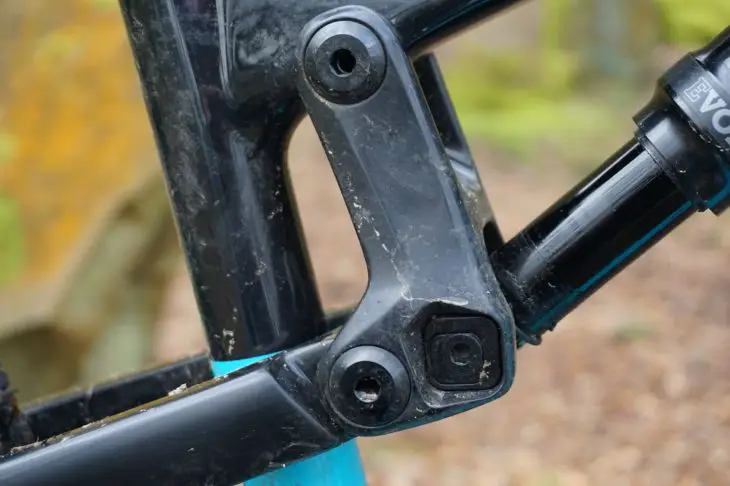
Obligatory angle chat aside, the frame of the Thunderbolt (which is also available separately) is an extremely nice-looking bit of kit. Featuring full carbon construction via rigid “Smoothwall” moulds, the new frame is also compatible with Shimano Di2 shifting and Fox’s Live Valve electronic suspension (at least, it will be when the latter system eventually gets released). Gone are the bushings of the old Thunderbolt, replaced with more conventional sealed cartridge bearings, and at the rear of the frame these are tucked away on the inside of the chainstays, giving the back end a super clean look.
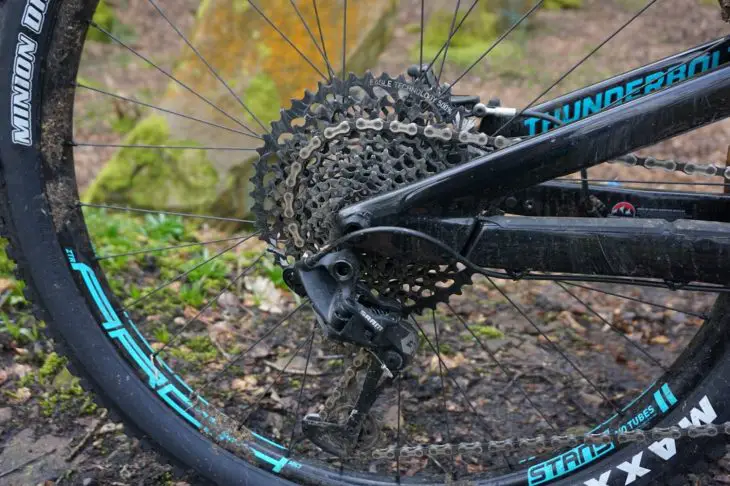
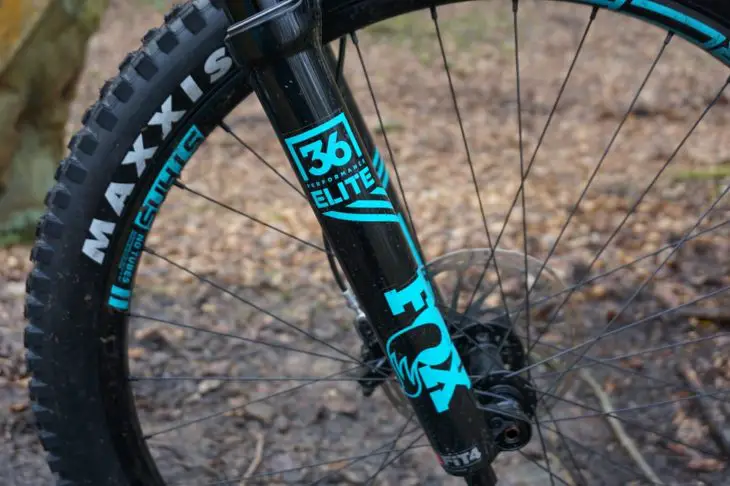
Rocky Mountain always put an extra bit of effort into the finishes of its bikes (who didn’t want a maple leaf Blizzard back in the day?) and the Thunderbolt is quite a looker, helped by the perfect match between the “Billy Ocean” blue of the frame and all the decals on the forks, wheels and finishing kit. The downside is that the gloss finish of the frame did scuff easily in the Yorkshire grit, so be lavish with the frame protection tape if you’re precious about your bikes.
After the opulence of the frame, the build of the Thunderbolt is a slight comedown, but it’s all quality kit that does the job. The Fox 36 fork is from the Performance tier, rather than the top drawer Factory range, while the Fox Float DPS EVOL rear shock will be instantly familiar to a lot of riders, thanks to its 3-position lockout/trail/open switch.
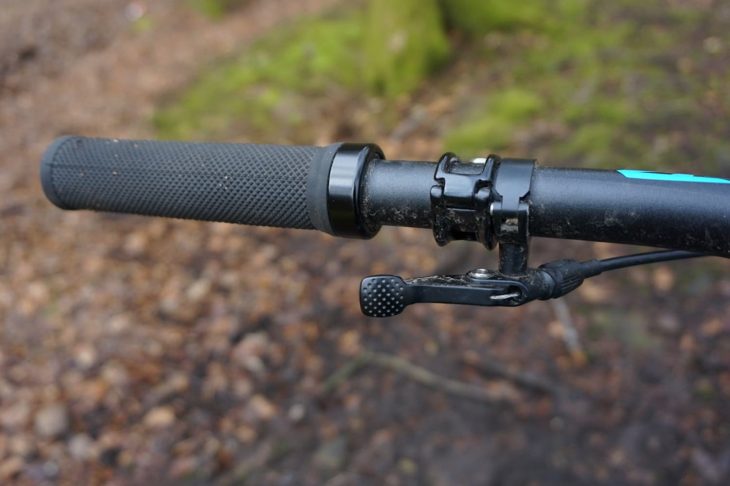
Fox also supplies the Transfer dropper post, which is already one of our favourites thank to its tactile lever, reliable functioning and nice audible “clunk” as it returns to full travel. The post on our test bike did have a minute amount of lateral play, but it wasn’t enough to be noticeable on the trail.
The Thunderbolt comes with 2.3in wide Maxxis Minion tyres, though it’s ready to take proper chunky 2.5in jobs. It’ll also fit 2.8in wide 26+ tyres, if you can find a pair anywhere in the UK (check out David’s feature on going 26+ here if you’re interested in that caper). The tyres on our test bike were already set up tubeless with Peaty’s sealant courtesy of the distributors Greenover Sports, and run on Stan’s No Tubes Arch rims that give a nice square profile. A DT Swiss freehub gives quick pickup and a classy precision watch tickover when you’re not pedalling.
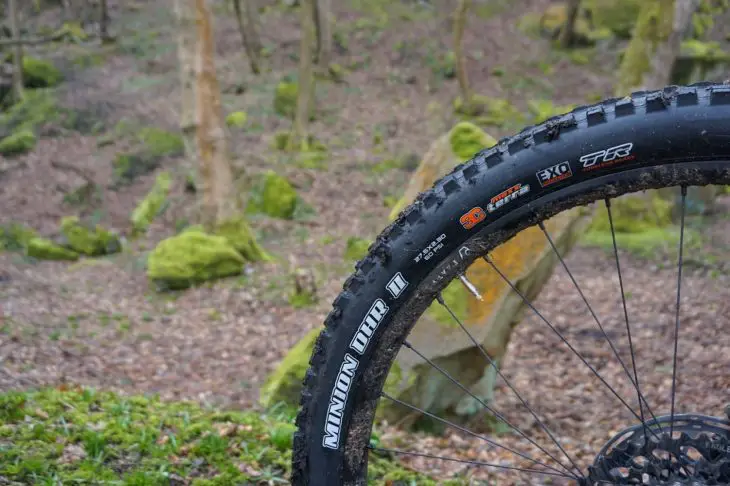
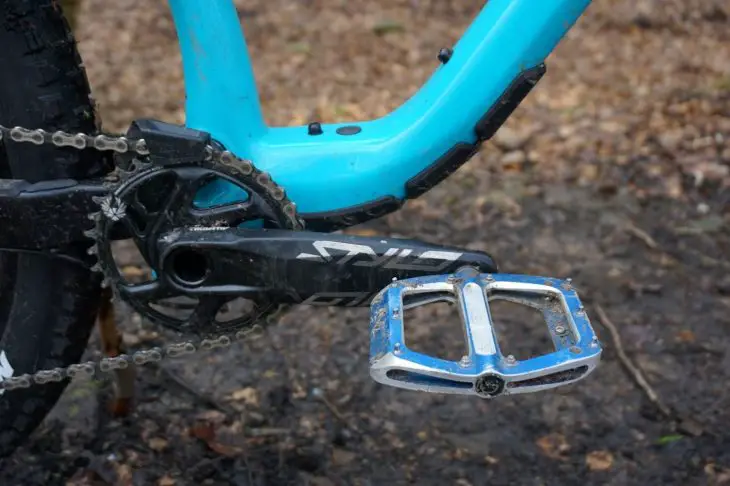
The now-ubiquitous 50T SRAM GX Eagle cassette and shifter mean that, in theory, you should never have to push up anything again that isn’t a full-on hike-a-bike, although here it’s sensibly paired with a 34T front ring. I’m finding Eagle a bit more fussy to adjust than a 10 or 11-speed system, but I suspect for most people the sheer range on offer will more than make up for this. Above the press-fit BB is a natty integrated chain guide – again, not something you normally find on XC bikes.
The build is finished off with appropriately burly 780mm Race Face bars held by a 35mm stem, and some generic file-textured lock-on grips. The WTB Silverado saddle was a bit sharp at the edges for my liking, but most people will probably change it to suit their preference.
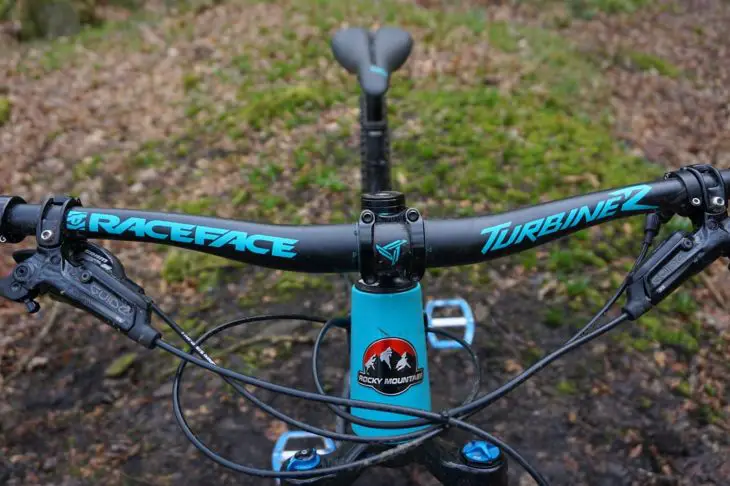

The Ride
We had a short sojourn with the Thunderbolt, and can report back with the following findings. First of all, as you might suspect, this isn’t really an XC bike – it climbs well, but it’s really all about the downs. The chunky, sticky tyres roll well enough, but while it’ll get you to wherever you’re going, it’s not aimed at folk who want to cover the miles quickly. In the slack geometry setting it also gets a touch of front wheel lift on really steep climbs.
Fortunately, while it might be slightly miscategorised, it’s also a heap of fun to ride. Whereas the Instinct steamrollered everything in its path, the Thunderbolt forces you to choose lines, but it’s also the type of bike that makes it much easier to pick one. When trails turn 8-bit, the Thunderbolt happily smooths out the blocky edges, but it’ll also pop off lumps and switch lines with ease. The short stays make it easy to pick the front up or skip from one side of the trail to the other, and the suspension has a pleasingly straightforward action. The BB height is also at the sweet spot where you won’t be clattering the pedals on everything, but it’s low enough to feel planted in the corners.
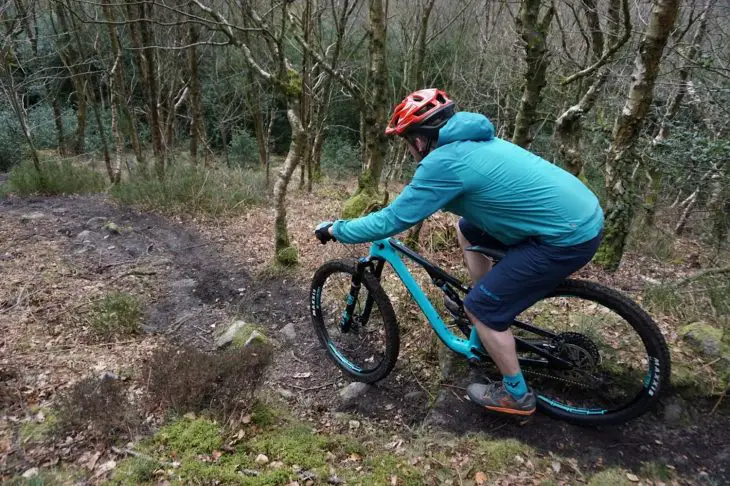
The Fox 36 forks really complement the stiff, confidence-inspiring frame, although they do add a bit of heft. The latest version of the forks requires a surprisingly small amount of pressure (they were happy being run at 50 psi or so with my 12-stone frame aboard) which probably helps with responsiveness.
The only part of the bike that I struggled to get singing was the rear shock, which tended to be a bit chattery on the slabby trails that make up a lot of our local riding. I was still getting full travel, but I felt that it could have been more supple at the start of the stroke. It’s probably something that could be solved with more tuning, but I did find myself wondering if a piggyback shock would do the bike more justice. It’s also worth noting that the Ride-9 chips can be adjusted to give the shock a rising suspension rate, which is something that I’d have tested out if I’d had a bit more time to experiment.
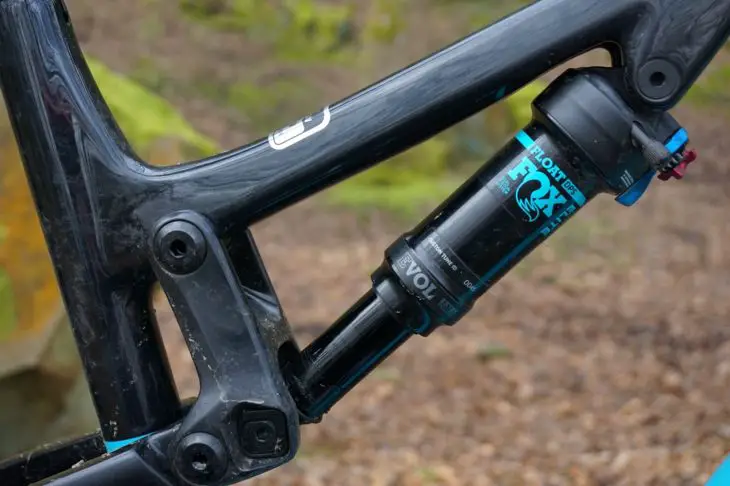
All the kit on the bike worked well over the short time I had with it. If I’m being really picky, the SRAM Guide brakes were initially a bit noisy, although from previous experience they tend to calm down after a few rides, and a longer travel dropper post would make the most of the frame’s copious standover.
The overall impression of this bike is that it’s extremely hard to faze. It’ll punt off and rattle though stuff quite happily, but settling in for a long draggy climb never feels like a chore either. If it was a dog, it would be a terrier [Ed: The Rocky Mountain Thunderdog perhaps?]. It’s small and nimble, but aggressive enough to take on things that are much bigger than it is. The more compact platform will please short folk looking for a do-it-all trail bike, and Rocky Mountain is clearly aware of this, as sizing runs all the way down to extra small. But it’s also lively and engaging, and won’t flinch at more technical trails – everything you want a shorter travel trail bike to do.
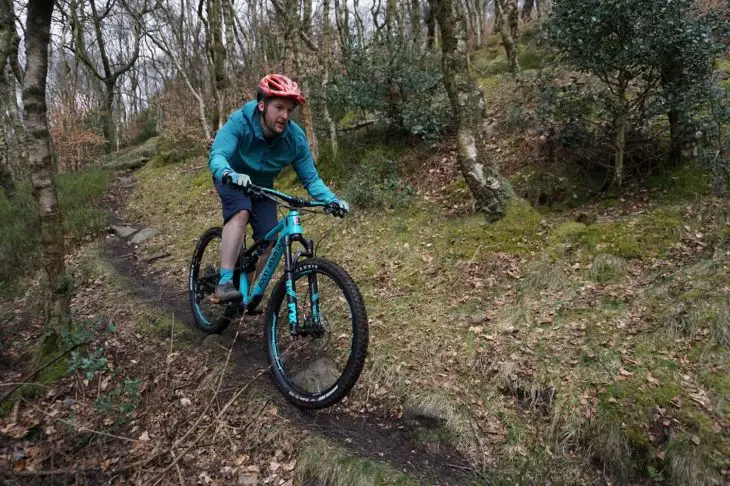
Overall
For a lot of UK riders, the regular Thunderbolt, which has 130mm travel, may be more than enough (It also comes in at a much lower price point, starting at £3,199.99 for the Thunderbolt C30, which still has a full carbon frame). I’m guessing the BC Edition is Rocky Mountain showing what they can do, rather than what they think will sell, but it’s another great addition to a strong lineup of 2018 bikes.
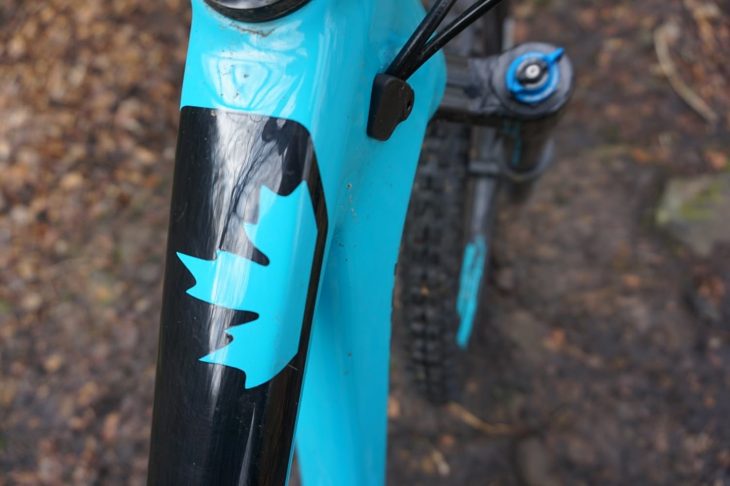
2019 Rocky Mountain Thunderbolt BC Edition
- Frame // Smoothwall Carbon, 140mm Travel
- Fork // Fox 36 Float Performance Elite, 140mm
- Shock // Fox Float DPS EVOL Performance Elite, 140mm
- Hubs // DT Swiss 350 Boost 148mm, Rocky Mountain Sealed Boost 15mm
- Rims // Stans Arch MK3
- Tyres // Maxxis Minion DHF/DHR Maxx Terra 3C, 2.3″ Front & Rear
- Crankset // SRAM Stylo 7k Eagle, 34T chainring
- Chain guide // Rocky mountain Spirit Guide
- Rear Mech // SRAM GX Eagle, 12-Speed
- Shifter // SRAM GX Eagle, 12-Speed
- Cassette // SRAM XG 1275, 10-50t, 12-Speed
- Brakes // SRAM Guide RS, 180mm Centrelock Rotors
- Stem // Rocky Mountain 35 CNC
- Bars // Race Face Turbine R 780mm
- Grips // Rocky Mountain Lock On XC
- Seatpost // Fox Transfer Performance Elite 30.9mm
- Saddle // WTB Silverado Race
- Size Tested // Medium
- Sizes available // X-Small, Small, Medium, Large, X-Large
- Weight // 27.7lbs (claimed)
- RRP // £5,499.99
Review Info
| Brand: | Rocky Mountain |
| Product: | Thunderbolt BC Edition |
| From: | Greenover Sports, greenoversports.com |
| Price: | £5499 |
| Tested: | by Antony for 2 weeks |
